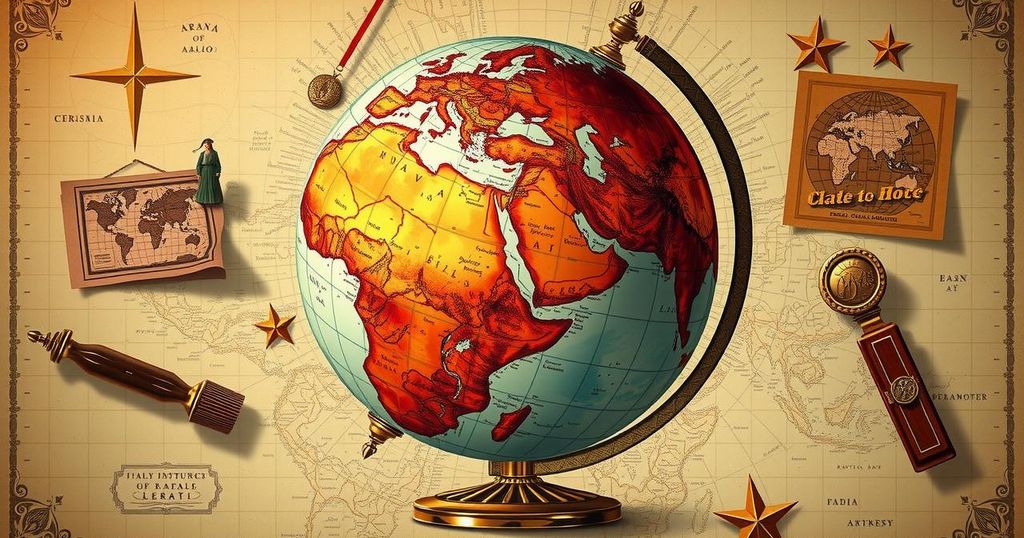World news
’ ESH, AFRICA, ANATOLIA, ARABIA, ASIA, BIEN PHU, CIVIL WAR, COLUMBIA, COLUMBIA UNIVERSITY PRESS, CONFLICT, DA, IRAN, JONATHAN WYRTZEN, LAWRENCE OF ARABIA, LIBYA, MANARA, MIDDLE EAST, MOROCCO, REFUGEE CRISIS, RIF REPUBLIC, TERRORISM, UNIVERSITY PRESS, WAR, WYRTZEN
Jamal Robinson
0 Comments
Reassessing Middle Eastern History in World War I
Jonathan Wyrtzen’s book emphasizes the critical role of the Middle East in World War I and the subsequent shaping of its modern political landscape. It challenges dominant narratives, illustrating that the region was actively engaged in its struggles against colonial rule. The work spans significant events and movements from 1911 to 1934, providing a valuable reassessment of Middle Eastern history.
Jonathan Wyrtzen’s “Worldmaking in the Long Great War: How Local and Colonial Struggles Shaped the Modern Middle East” brings much-needed attention to the role of the Middle East during World War I. This book challenges mainstream historical narratives, illustrating how the region was not merely passive under colonial forces but actively engaged in shaping its future.
The book spans events from 1911 to 1934, encompassing a vast area from Morocco to Iran. Wyrtzen highlights the chaos of WWI as a pivotal moment where varied futures were possible for the Middle East, detailing significant upheavals like the Rif Wars, Kurdish revolts, and the Great Syrian Revolt.
Such early 20th-century turmoil echoes in contemporary conflicts, exemplified by Da’esh’s actions on the Syrian-Iraqi border and the lasting legacy of the Rif Republic in Morocco. Wyrtzen asserts that historical statements regarding the first decisive indigenous victories are misleading, citing earlier successes against colonial forces, such as the Senussi victory at Gasr Bu Hadi in 1915.
Religious movements played crucial roles in anti-colonial resistance across the region. Notable instances include the Sheikh Said Rebellion in Anatolia and the Senussi movement in Libya, both of which illustrate the intertwining of faith with liberation efforts against colonial powers.
Wyrtzen’s exploration of Syrian affairs stands out, bringing depth to French colonialism that is often overlooked in English-language literature. While he revisits well-known narratives like Ibn Saud’s consolidation of Saudi Arabia, the book could delve further into areas like Somalia and Afghanistan to present a broader scope of Middle Eastern experiences during this era.
The work situates the Middle East centrally within World War I’s broader historiography, challenging romanticized views of the region’s role, as perpetuated by figures like Lawrence of Arabia. Wyrtzen examines overlooked diplomatic communications, revealing critical moments when history could have changed trajectory.
The significance of the Middle East in the context of World War I has historically been underrepresented. Recent literature, including Wyrtzen’s work, seeks to rectify this oversight by illuminating the region’s critical struggles and developments during this tumultuous period. Furthermore, the book engages with broader colonial studies, offering insights into how local actors influenced the formation of modern Middle Eastern borders and political relations. Wyrtzen’s examination includes various revolts and resistance movements across the Middle East, contributing to a richer understanding of how these events shaped contemporary conflicts. His work stands within a larger scholarly effort that asserts the Middle East’s importance in global historical narratives around WWI.
“Worldmaking in the Long Great War” is an essential contribution to the field of colonial studies and Middle Eastern history. By highlighting local agency and the complexities of indigenous resistance, Wyrtzen reshapes the understanding of the region’s role during and after World War I. This book is recommended for those interested in a nuanced exploration of these topics and the critical “What Ifs” of history. Overall, Wyrtzen’s arguments encourage a reevaluation of established historical narratives, asserting the Middle East’s place at the forefront of global events during this transformative era in history.
Original Source: manaramagazine.org




Post Comment